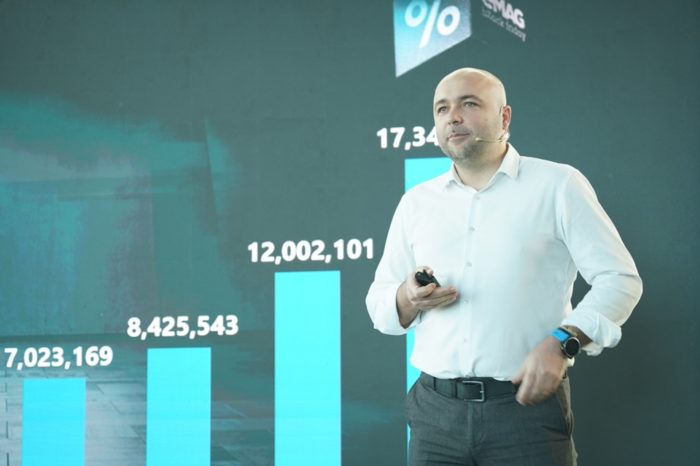Moody’s affirms Romania’s Baa3 ratings, maintains stable outlook

Moody’s Investors Service (Moody’s) has affirmed the Government of Romania’s long-term Issuer and Senior Unsecured Ratings at Baa3 and has also affirmed the Senior Unsecured MTN programme Rating at (P)Baa3. Concurrently, the short-term issuer ratings have been affirmed at Prime-3. The outlook on the ratings remains stable.
The affirmation of the Baa3 ratings reflects Romania’s robust medium-term growth prospects, supported by strong EU funds and foreign direct investment (FDI) inflows. It also reflects a debt burden and debt affordability metrics that will remain stronger than that of rating peers, although both are set to deteriorate gradually in coming years due to a still elevated budget deficit and rising interest payment costs. This is balanced against weaknesses in the quality of the country’s institutions, and susceptibility to geopolitical and external vulnerability risks.
The stable outlook balances the positive economic trend against the government’s continued difficulties to durably and materially reduce Romania’s elevated fiscal and current account deficits. Although these do not pose imminent risks to Romania’s credit profile, the twin deficit nevertheless represents a potential source of vulnerability for the sovereign’s creditworthiness.
The local and foreign currency ceilings of Romania remain unchanged at A2. The four-notch gap between the A2 local currency ceiling and the Baa3 rating reflects the low footprint of the government in the economy, moderate political risk and predictability of institutions as well as slightly weaker than average external imbalances. The gap is also in line with what is applied to other non-euro area EU countries. The A2 foreign currency ceiling, at the same level as the LC ceiling, reflects the strong economic and policy linkages with EU economies which minimizes the risk of transfer and convertibility restrictions.
Although Moody’s forecasts growth to slow to 2.0 percent this year, following two years of very strong growth in 2021 and 2022, as inflation dampens consumption and the euro area economic downturn weighs on external demand, Romania’s medium-term growth prospects remain strong. Moody’s expects growth to rebound to 3.2 percent in 2024 and 3.5 percent in 2025, in line with the rating agency’s estimate of the economy’s potential growth rate of 3 percent to 3.5 percent.
Romania’s strong growth prospects are supported by high levels of EU-funded investment and FDI. The country has been allocated a total of around 11 percent of 2021 GDP in grants and loans under the EU’s Recovery and Resilience Facility (RRF) to be spent until 2026. Although implementation is somewhat behind the original schedule, the Romanian authorities have continued to make progress with meeting the reform and investment milestones necessary to unlock the funds from the EU. Funds under the EU’s regular 2021-2027 budget cycle will also ramp up in coming years, bringing total EU funding to an average of around 4 percent of GDP per year. Moreover, Moody’s expects FDI in sectors such as manufacturing and information and communications services will remain strong in coming years at around 3 percent of GDP.
Moody’s also expects the trend of rapid labour productivity growth to continue, as Romania continues to catch up with more advanced European economies, and the reforms and investments under the RRF and other instruments begin to have an impact on the economy’s growth potential. Such positive trends will largely dominate the negative impact of fiscal consolidation and labour shortages in coming years. The reduction of the fiscal deficit will be a gradual process, while labour shortages driven by a declining working-age population are increasingly being filled by labour immigration from non-European countries.
Moody’s expects Romania’s government debt burden to stand at 48.2 percent of GDP at the end of 2023, a level broadly on par with that of the two preceding years, and far below the Baa3-rated median (excluding Romania) of 76.3 percent of GDP.
Romania’s debt-to-GDP ratio has been kept relatively stable following a pandemic-driven increase in 2020, due to the rapid growth of nominal GDP in an inflationary environment, even though the government fiscal deficit has remained elevated. Romania entered the EU’s Excessive Deficit Procedure (EDP) in 2019 and had been set a target of reducing its fiscal deficit to 4.4 percent of GDP in 2023, from 6.3 percent in 2022. However, Moody’s expects there will be at best marginal improvement to the deficit figures this year, with the government financial balance forecast at -6.1 percent of GDP in 2023. This reflects a combination of factors such as unexpectedly weak revenues from the energy sector and state-owned enterprises (SOEs) and weaker-than-anticipated improvements to revenue collection.
The government in September announced a package of measures, including the ending of certain tax exemptions, VAT increases and the introduction of turnover taxes on banks and certain companies, to reduce the deficit in 2024 and beyond. Together with an improving growth outlook, and additional tax measures that Romania has committed to undertake as part of its RRP, Moody’s expects the deficit will be gradually reduced to 5.3 percent in 2024 and 4.4 percent in 2025.
The still elevated deficit, coupled with the slowing of nominal GDP growth as inflation decelerates in coming years, leads Moody’s to project that the debt-to-GDP ratio will increase gradually to reach 50.0 percent at the end of 2024 and 51.7 percent at the end of 2025. Romania’s debt affordability metrics will also continue to deteriorate in the higher interest rate environment. That said, the average weighted time to maturity of around 7 years will slow the pass-through to a markedly higher interest bill. Moody’s expects Romania’s interest payments- to-revenue ratio to increase from 4.4 percent in 2022 to around 5.2 percent in 2024-2025, which is still less than half of the median of its Baa3-rated peers.















